Is My Child Getting A Quality VI Program?
- determine whether your child is eligible for special education,
- review evaluation in all areas related to your child’s disability, and
- design an individualized educational program (IEP).
For students with visual impairments, there are additional areas of essential educational programming for the committee to consider, known as the Expanded Core Curriculum (see #4 below). Over the past several legislative sessions, new safeguards have been added into the Texas Education Code 30.002 that specifically list and mandate evaluation and instruction in all areas of the expanded core curriculum. This legal language is a powerful boost in ensuring that your school offers quality programs for students with visual impairments. (Editor's note: While this post is specific to Texas, every state has similar provisions.)
Guidelines for Analyzing Your Child's IEP
- The IEP should accurately reflect the impact of the visual impairment.
- The IEP should reflect the role of a certified teacher of students with visual impairments (TVI).
- The IEP should reflect the role of a certified orientation and mobility specialist (COMS).
- The IEP should reflect the Expanded Core Curriculum.
- The IEP should reflect VI specific input into literacy instruction.
|
Click here to download this page as a pdf. Click here to download the checklist. |
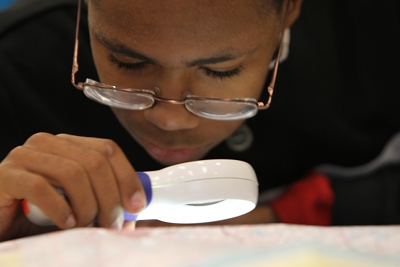
1. The IEP should accurately reflect the impact of the visual impairment.
___ Is there a functional vision evaluation (FVE) that clearly and accurately describes her visual functioning?
___ Does the FVE describe your child's vision in a way that reflects your input and what you know of your child's visual functioning outside of school?
___ Are there recommendations for modifications related to the visual impairment to be implemented in the classroom?
___ Is there a learning media assessment (LMA) that clearly describes whether your child learns best using visual, tactual and/or auditory materials and methods?
___ Are there plans for material preparation if your child needs adapted materials?
___ Does your child's program reflect evaluation and instruction in assistive technology for current and future access to learning and literacy?
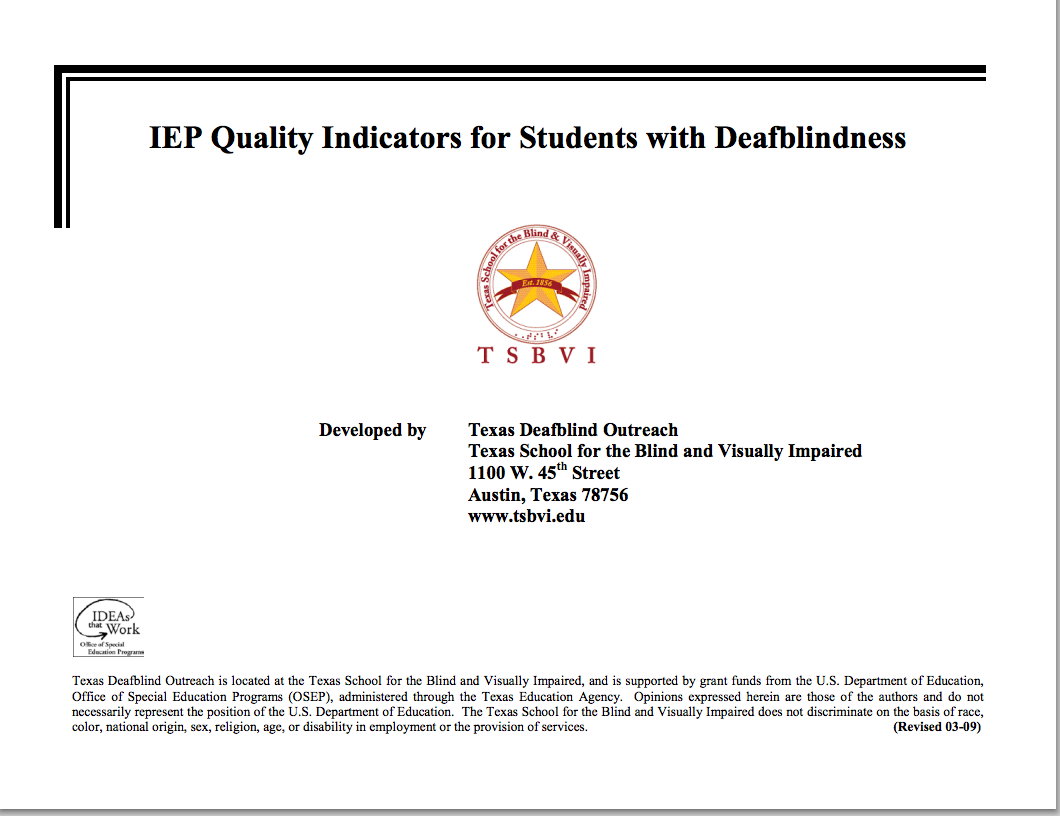 The Texas Deafblind Project has developed a DB IEP Quality Indicators checklist for your use. This document, accessible here, is a very useful organizing tool to help you evaluate your child’s program.
The Texas Deafblind Project has developed a DB IEP Quality Indicators checklist for your use. This document, accessible here, is a very useful organizing tool to help you evaluate your child’s program. There are an infinite variety of ways that visual impairments can impact learning. Knowing the best approach is vital for successful learning. Some possible individualized learning supports needed to enhance your child's success can include:
- specific lighting conditions,
- reduced visual clutter,
- extended time,
- adapted materials,
- modified seating assignments,
- tactile materials (which may include tactile symbols, tactile graphics and/or braille),
- routines for daily activities,
- auditory materials, and
- larger print or specific fonts.
2. The IEP should reflect the role of a certified teacher of students with visual impairments (TVI).
TVIs can provide very effective services through direct instruction with students. They can also support excellent programming indirectly by collaborating with the other team members on instructional strategies, ensuring that adapted materials and environmental adaptations are implemented, and consulting with families and related agency personnel.
Some skills are typically and appropriately taught directly by a teacher of students with visual impairments, such as:
-
low vision device training and other visual efficiency skills,
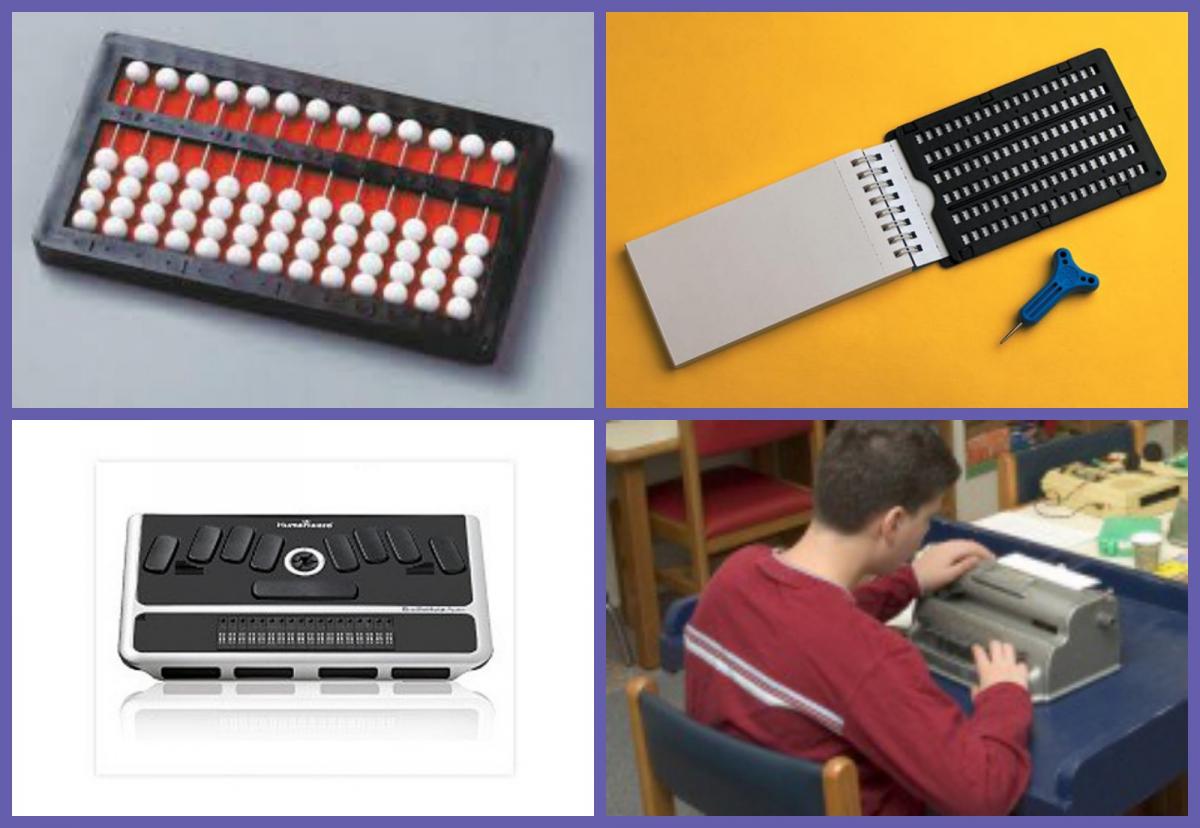
- use of the abacus,
- concept development as required to access learning,
- specialized assistive technology,
- slate and stylus,
- braille reading skills, and
- non-visual adaptations for daily living skills and other areas of the expanded core curriculum.
These skills can then be reinforced by and practiced with paraprofessionals and classroom teachers. Ongoing student achievement can be monitored by the TVI.
Other learning, such as general literacy skills and core academic content, will be more will be more appropriately learned along with sighted peers in the regular or special ed classroom. The TVI will provide assistance with adapted books or materials and suggest appropriate adaptations to teaching strategies to the main teacher. This indirect service, also called collaborative consultation, is critical to the success of each child across the school day, even if they also receive direct instruction.
If you have questions about the terms direct versus consult services, you can review Related Services: Direct versus Consult from SEE/HEAR or a PACER Center ACTION Information Sheet: Direct and Indirect Services.
You should be able to understand what the TVI's role is in your child's educational programming. That role may change as your child gets older, learns new skills or is served in different settings. It is a good idea to talk with your TVI before the ARD to find out what specific type of instruction and services might be recommended. One aspect of a quality VI program is definitely good communication between parents and the TVI (and other team members) and clarity on what kinds of specialized VI professional support is written in the IEP.
This should be directly related to your child’s evaluation and IEP. Many parents think that the more time a TVI spends directly with their child, the better, yet not all children need direct instruction from a TVI and typically not in all subjects. For example, perhaps your child can learn to advocate for herself and get many vision-related needs (such as adapted materials or preferential seating) met independently and rely less on the TVI for that kind of support. Or in some cases the class is already working on the functional skills that your child needs such as cooking or dressing, and with good support from the VI professional, the special education teacher can fully include your child with their peers. In such cases, direct instruction from the TVI is not necessary.
Determining how much time to provide for each student is a complex professional responsibility, and should be based upon evaluation of each child's strengths and needs in all areas of the expanded core curriculum as well as agreed-upon priorities for the upcoming year.
3. The IEP should reflect the role of a certified orientation and mobility specialist (COMS).
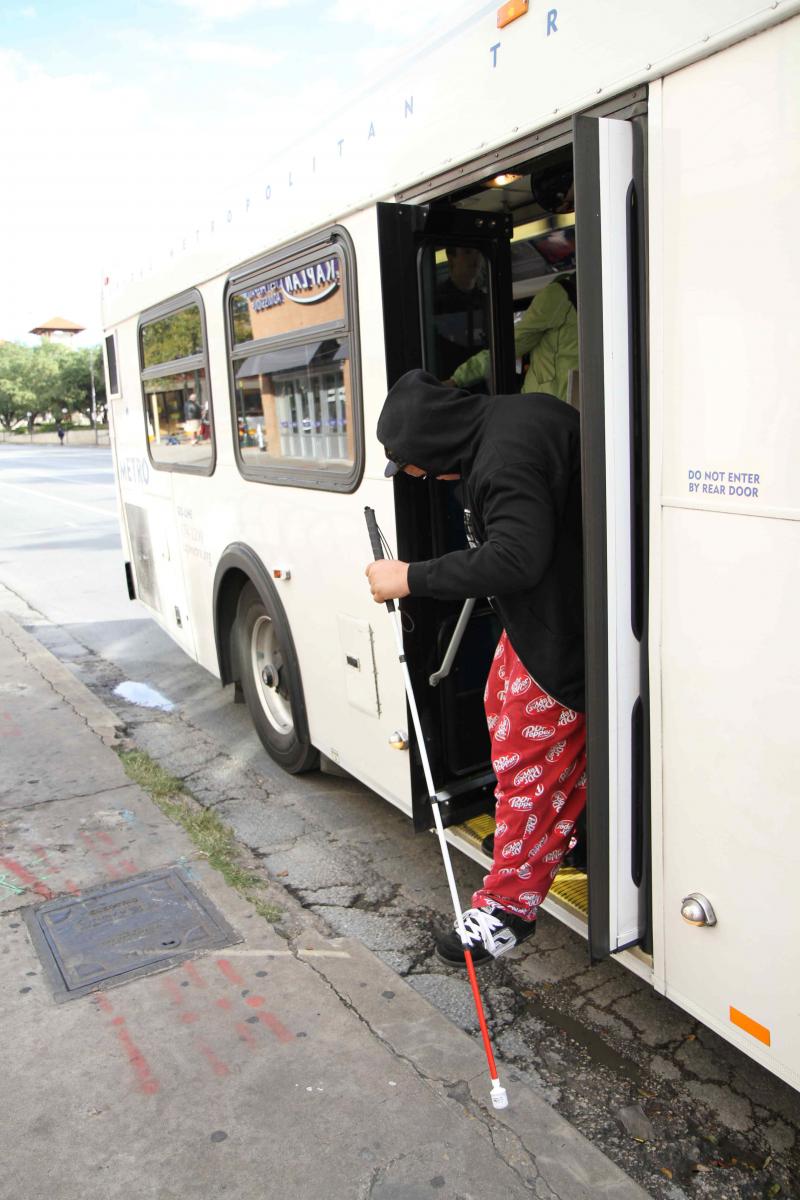 Children must move and interact with their world to learn. Safe and efficient movement is critical to lifelong learning. If your child’s visual condition affects her orientation and movement in her home, school or community, a certified orientation and mobility specialist (COMS) should be involved in her education.
Children must move and interact with their world to learn. Safe and efficient movement is critical to lifelong learning. If your child’s visual condition affects her orientation and movement in her home, school or community, a certified orientation and mobility specialist (COMS) should be involved in her education.
Starting in the 2014-2015 school year, Texas Education Code 30.002 requires that all students must have an O&M evaluation by a certified O&M specialist as part of initial eligibility decisions for services as a student with a visual impairment. An O&M specialist must also be part of the team when determining whether there is a need for further evaluation.
Look for an evaluation of your child’s O&M skills and a determination on whether O&M services are needed. The need for O&M instruction varies for each child each year. If your child is entering a new setting or a new developmental level, starting a community job or changing classes, she may have a greater need for O&M than in the past. There are lessons that a COMS must directly provide to your child, including cane techniques and street crossing skills, and there are also strategies that an O&M will need to collaborate with the educational team to reinforce, such as ensuring that the child uses his skills with a monocular or his basic cane technique.
Orientation and mobility is one of the expanded core curriculum areas (see #4) considered critical for the education of all children with visual impairments, including those who have additional disabilities.
4. The IEP should reflect the Expanded Core Curriculum.
- Compensatory or Functional Academic Skills, Including Communication Modes – includes concept development, vi specific study and organizational skills, braille, calendar systems, tactile graphics and adaptations necessary for accessing all areas of the existing core curriculum, such as literacy instruction (see #5)
- Orientation and Mobility – skills for accurate body image, spatial awareness, and safe and efficient movement
- Social Interaction Skills – interaction and relationship skills that are difficult to acquire without systematic instruction
- Independent Living Skills – daily living skills to promote independence in personal life
- Recreation and Leisure Skills – organized exposure and skill development that match interests and abilities with options for fun
- Career Education – learning about the world of work and exploring apropriate personal vocational goals
- Assistive Technology – skills and the necessary technology equipment to hook into the information technology explosion and succeed in school, recreational and career areas
- Sensory Efficiency Skills – systematic instruction to maximize use of functional visual, tactile and auditory skills
- Self-Determination – Self-determination includes personal decision-making, self-advocacy, and assertiveness
As a parent, you will want to ask the teacher of visual impairments (TVI) and certified O&M specialist (COMS) to review evaluation in each area with you as a basis for developing priorities for your child. Not every child will need instruction in every area, but the only way to find the gaps is through systematic evaluation. Informal checklists and evaluation tools as well as academic records and progress notes should be collected from many members of the team and shared. This allows the team to compile a comprehensive review of your child’s current functioning. Remember that you are part of the team, and your information about how well your child uses skills in daily living, recreation and leisure, and social skills in the home setting is crucial. Your knowledge of your child’s level of functioning in these areas and others is necessary for the school to have an accurate overview.
Although your child is eligible for schooling from birth through age 22, most life skills are best learned in small sequential stages throughout the educational years. Go over the expanded core curriculum with your VI staff and discuss plans for when specific skills in each area will be addressed.
5. The IEP should reflect VI specific input into literacy instruction.
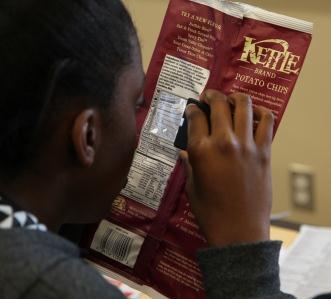 enlarged print. Although developing literacy skills is emphasized in regular education programs, researchers are continuing to investigate how best to support instruction for visually impaired students. Cay Holbrook and Alan Koenig’s research found widespread professional agreement that daily direct instruction from a certified teacher of students with visual impairment for one to two hours each day is essential for a child engaged in beginning braille literacy. These researchers and others have also studied literacy instruction for students with low vision. The amount and type of instruction for your child will vary based on your child’s visual needs and her age, learning styles, presence of other disabilities, and instructional setting.
enlarged print. Although developing literacy skills is emphasized in regular education programs, researchers are continuing to investigate how best to support instruction for visually impaired students. Cay Holbrook and Alan Koenig’s research found widespread professional agreement that daily direct instruction from a certified teacher of students with visual impairment for one to two hours each day is essential for a child engaged in beginning braille literacy. These researchers and others have also studied literacy instruction for students with low vision. The amount and type of instruction for your child will vary based on your child’s visual needs and her age, learning styles, presence of other disabilities, and instructional setting. You need accurate information about your child’s reading levels. Some students struggle with reading for reasons that are not related to their visual status, and more time from a TVI may not solve the problem. For others, the visual impairment causes significant access issues and a TVI is the best professional to support your child’s literacy instruction. These differences are not always easy to diagnose. Usually reading problems are best addressed by a team that includes the reading instructor or specialist working with the VI teacher to diagnose the source of the challenge and design a successful program. A new document about literacy decisions on the TSBVI website may help explain some aspects of this process: http://www.tsbvi.edu/resources/3947-literacy-medium.
6. The IEP should reflect a long-term view of education.
According to the Individuals with Disabilities Act, the goal of special education is to prepare students for employment and independent living. There are so many areas to think about in writing IEPS that it can become overwhelming. Remember that each year builds upon the last, and that there is a team to help you. You might want to seek out older students and adults who have visual impairment to develop a model for your child’s future. Most people have not come into contact with many blind or visually impaired adults and may question what is possible for your child. It is helpful to cultivate dreams for your child’s adult life (or at least young adult!) and then try to design each school year to lead most effectively towards making those dreams come true. This will help you decide what annual IEP goals are important, reflect your child’s abilities, strengths and preferences, and will help him grow up to find a fulfilling life.
What if my child doesn’t have an IEP with vision specific goals?
If your child has a visual impairment that qualifies her for special education, the team must review relevant evaluation of current functioning in all areas related to the disability in developing an annual IEP. If your child does not appear to have any IEP goals or recommended modifications for instruction that reflect the presence of a visual impairment, or any role for a TVI or a COMS related to the visual impairment, ask to see the recommendations in the functional vision evaluation and learning media assessment and evaluation in all areas of the expanded core curriculum. Decisions on the type and amount of VI service delivery should be based upon how your child is doing in all areas related to the disability.
So, how do you know if your child’s VI program is high quality? Ask questions, look for progress, check that all areas of the expanded core curriculum have been evaluated and addressed as needed and that appropriate VI professional support is available. A quality VI program addresses the impact of vision loss on learning, and provides compensatory and specialized skills training so that your child can become a productive and happy adult.
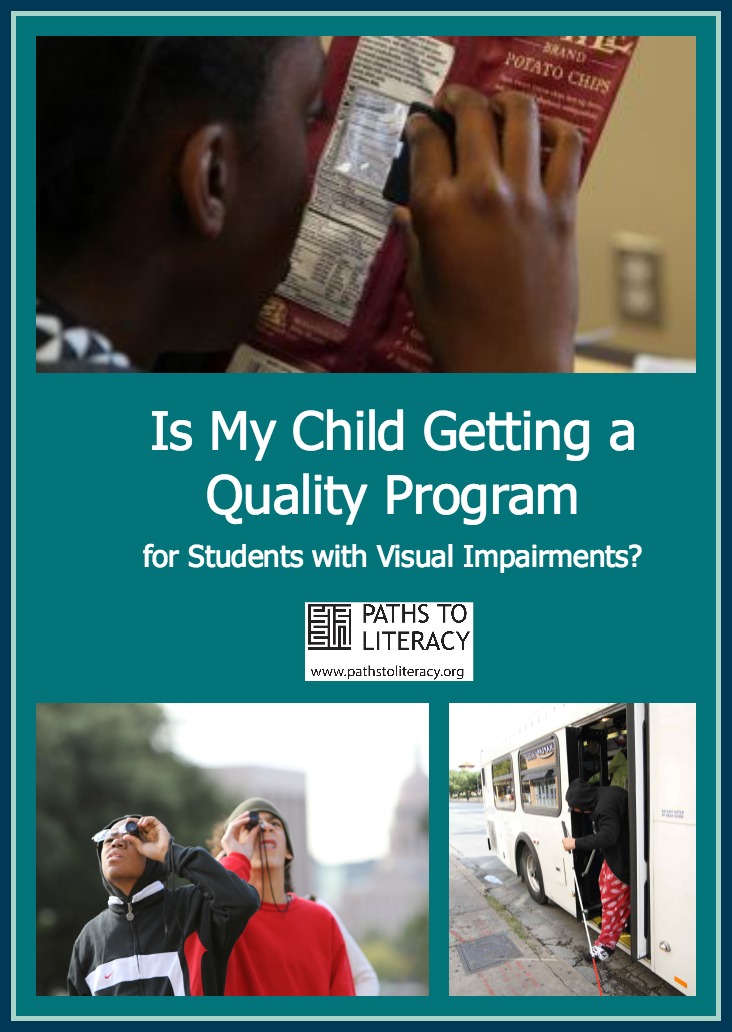

Comments
Excellent blog